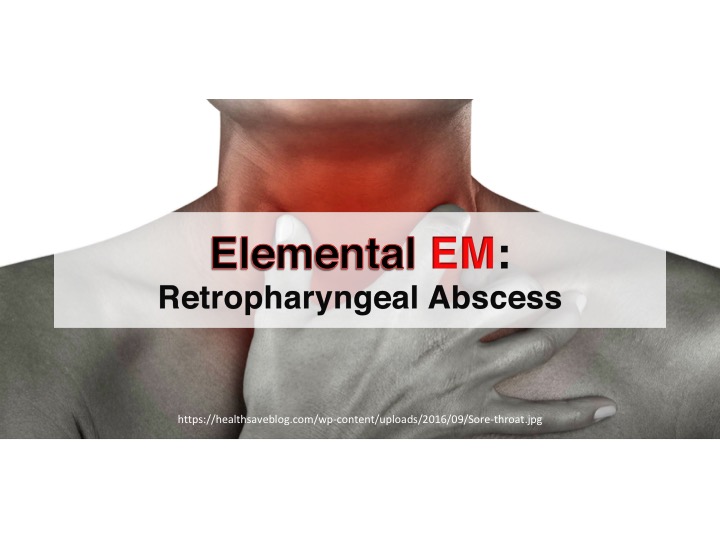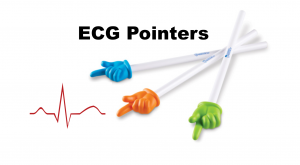Authors: Moira Carroll, MD (EM Resident Physician, Icahn SoM at Mount Sinai) and Courtney Cassella, MD (@Corablacas, EM Resident Physician, Icahn SoM at Mount Sinai) // Edited by: Alex Koyfman, MD (@EMHighAK, EM Attending Physician, UT Southwestern Medical Center / Parkland Memorial Hospital) and Brit Long, MD (@long_brit, EM Attending Physician, San Antonio, TX)
Clinical Case:
An 19 year old male comes into your ER complaining of 1 week of throat pain. He endorses intermittent fevers at home, now feels like he is significant odynophagia. He just started his senior year of high school, states that a bunch of his new friends are sick. He is up to date on his vaccinations. Review of systems is otherwise negative. On physical exam, vital signs T 38.6° C, HR 104, BP 110/62, RR 20, O2 saturation 99% on room air, he has cervical lymphadenopathy, the oropharynx is erythematous, with tonsillar exudates. Rapid strep and monospot are negative, you send a throat culture. The patient is given decadron and motrin and feels better, he is tolerating water. He is discharged with supportive care and instructions for primary care follow-up.
Some days in your fast track or pediatric emergency department you will see countless sore throats with benign features. This post is a way to start a discussion on more dangerous features of sore throats.
———————————-
What if this patient was 4 years old and his mother noted crying when she tried to give him juice and “his shirt is wet with spit”?
What is the differential for sore throat? (Ref 1,2)
|
Differential Diagnosis for Sore Throat |
||
|
|
|
What would make you consider retropharyngeal abscess? (Ref 1,2)
History:
- 96% are <6 years old
- Preceding nasopharyngitis, otitis media, parotitis, tonsillitis, peritonsillar abscess
- Dental infection and procedures
- Upper airway instrumentation
- Endoscopy
- Blunt and penetrating trauma – foreign body often a fish bone
- Ingestion of caustic substances
- Vertebral fractures
Signs/Symptoms:
- Fever
- Sore throat, dysphagia, odynophagia
- Drooling, muffled voice, dysphonia – described as duck quack (cri du canard)
- Neck stiffness
- Positioning with necks extension and remaining supine, sitting makes it worse as swollen tissue can compress airway.
Physical Exam Findings:
- Pain/limitation of neck extension/flexion (Ref 3)
- Fever
- Cervical lymphadenopathy
- Trismus, Torticollis
- Diffuse edema and erythema of posterior pharynx
- Neck swelling (rare)
- Tracheal rock sign – pain with moving trachea side to side
- Symptoms disproportionate of findings should prompt further evaluation*
What are the upper airway signs that signify an impaired airway (and the need to intubate)?
- Stridor
- Unable to handle secretions
- Positioning (sniffing, neck in hyperextension)
- Voice changes
How do you diagnose retropharyngeal abscess? (Ref 1)
- Lateral neck X-ray or CT scan
- Anteroposterior (AP) diameter of soft tissues along anterior bodies of C1- 4 should be less than 40% of the AP diameter of the vertebral body behind it (Ref 1)

What is the management of a retropharyngeal abscess? (Ref 1,2)
- Antibiotics: Most infections are polymicrobial (oral flora)
- Clindamycin
- High dose penicillin + Metronidazole
- Piperacillin tazobactam
- Ampicillin sulbactam
- Consultant: Otolaryngology
- Admit (often ICU)
References
- Melio FR. Upper Respiratory Tract Infections.Chapter 65, 857-870.e1 In: Rosen’s Emergency Medicine: Concepts and Clinical Practice. 9th Edition.
- Rose E. Pediatric Respiratory Emergencies: Upper Airway Obstruction and Infections. Chapter 167, 2069-2080.e2. In: Rosen’s Emergency Medicine: Concepts and Clinical Practice. 9th Edition.
- Craig FW, Schunk JE. Retropharyngeal abscess in children: clinical presentation, utility of imaging, and current management. Pediatrics. 2003; 111(6 Pt 1): 1394-8.






